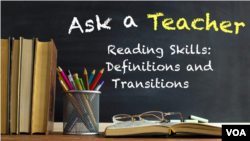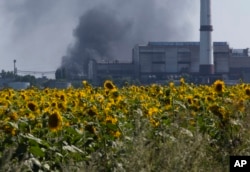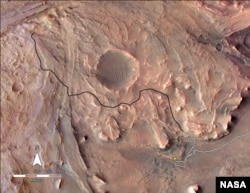Hello! This week on Ask a Teacher, we will answer a question about reading skills like finding definitions and transitions.
Question:
Greetings from Ecuador,
Could you please provide me any information and guidance to improve my reading skills and share them with my English students?
Thank you in advance for your help and support,
Angel
Answer
Thanks for writing to us, Angel. When we read, we are reading someone’s piece of writing. So, we can bring writing skills to the activity of reading. Finding transitions and definitions can help us with our reading.
Transitions
Transitions are words and phrases that connect ideas. Transitions help with organizing thoughts in writing. They help develop ideas smoothly. Identifying transitions while reading can help us better understand what we are reading.
Transitions can be found within paragraphs, between paragraphs, and between longer divisions of text.
There are several kinds of transitions. Time-order transitions are words like “first,” “next,” “second,” “finally,” and “lastly.” They establish the order of events or ideas.
There are also transitions that show a relationship between ideas.
For example, we can show contrast between ideas by using “however” or “nonetheless.” We can show results by using the phrases “as a result” or “consequently.”
Here is an example paragraph from a recent story called, “Five Ways That the Ukraine War Has Changed the World.”
What transitions are used?
“Before the war, much of the grain and vegetable oil sent to the Middle East and Africa came from Ukraine and Russia…. Now, countries are thinking about ways to provide their own food and energy.”
Two time-order transitions, “before” and “now,” are used to show the time relationship between events that happened.
Spotting the transitions and knowing what they mean can be helpful when reading.
Definitions
We can also find definitions within the text to help us better understand unfamiliar words. There are a few ways to do this.
We can find verb phrases like “is/are,” “is defined as,” “is called,” “means, or “is a type of.” Noticing these phrases within the story can help us learn new vocabulary.
Here is an example from the article, “Study: Better Instruments Needed to Discover Life on Mars.”
“Such testing is carried out in areas where bodies of water once existed.
This is because those areas, called deltas, contain higher levels of ancient microbes to study. The Red Stone area was a river delta about 100 million years ago.”
We can see from this example, that “called” is used. The term “delta” is in an earlier paragraph, too. A delta is a kind of body of water, a place where a river meets the sea. We even have an example with The Red Stone area as a river delta.
Another way to show definitions is through punctuation like dashes or commas.
Here is an example from our American Presidents stories: “George Washington: Reluctant.” This example uses two ways of showing a new word.
“He established a group of advisors — called the cabinet — as well as the nation’s official money.
Here, we see that the writer uses dashes and “called” to give an informal definition of the group of advisors.”
And, we can find definitions by reading further into the text.
Here is an example from another recent story called, “'Imperfect' Models in Italy Redefine Beauty.”
“Sonia Spartá is one of the models. The 28-year-old from Sicily has a condition called hyperpigmentation or unusual skin coloring. It results in dark spots on her face and body.”
The word that is defined is “hyperpigmentation.” The definition is found right after the conjunction “or,” which shows the definition. But if you read further into the next sentence, you can find out more about Sonia’s condition. The writer uses the verb “results” to show the relationship between the condition of hyperpigmentation and its results.
Please let us know if these explanations and examples have helped you, Angel!
What question do you have about American English? Send us an email at learningenglish@voanews.com
And that’s Ask a Teacher.
I’m Faith Pirlo.
Faith Pirlo wrote this lesson for VOA Learning English.
___________________________________________________________
Words in This Story
paragraph – n. a part of a piece of writing that usually that begins on a new line and often is made up of a few sentences
contrast –n. a difference between things or the act of comparing two things to show their differences
punctuation –n. the marks (such as periods and commas) in a piece of writing that make its meaning clear
dash – n. a horizontal line that represents a break in meaning; often used before a definition
conjunction – n. grammar: a word that joins together sentences, clauses, phrases, or words
Do you have a question for the teacher? We want to hear from you. We have a new comment system. Here is how it works:
- Write your comment in the box.
- Under the box, you can see four images for social media accounts. They are for Disqus, Facebook, Twitter, and Google.
- Click on one image and a box appears. Enter the login for your social media account. Or you may create one on the Disqus system. It is the blue circle with “D” on it. It is free.
Each time you return to comment on the Learning English site, you can use your account and see your comments and replies to them. Our comment policy is here.













Forum